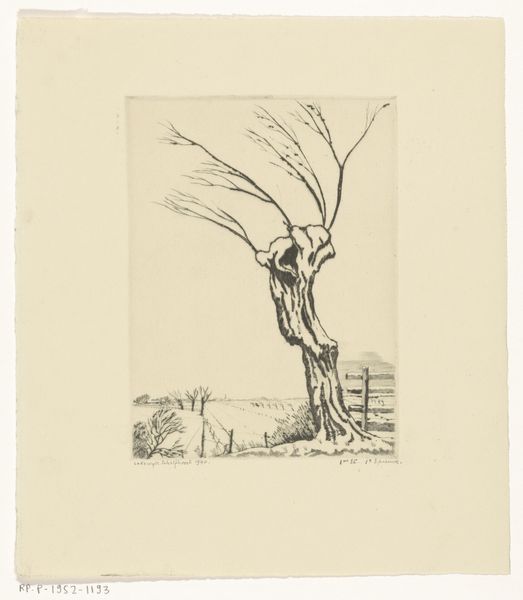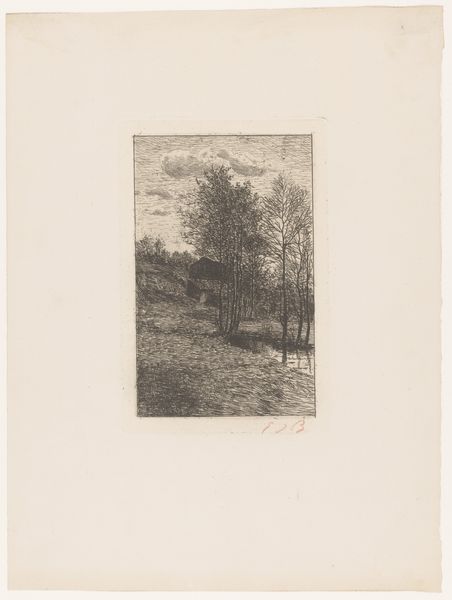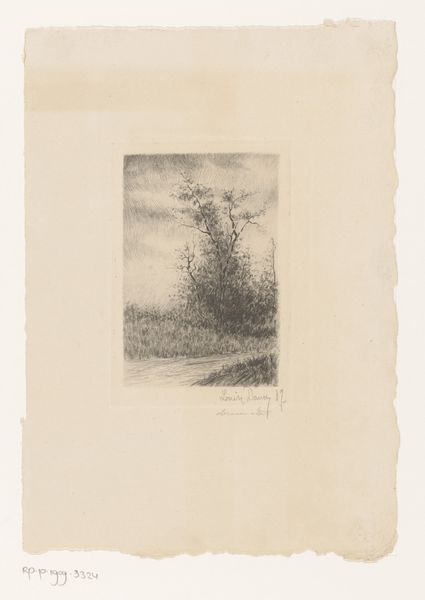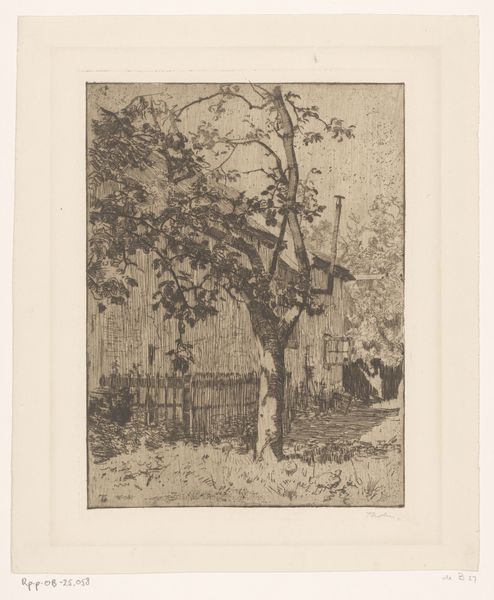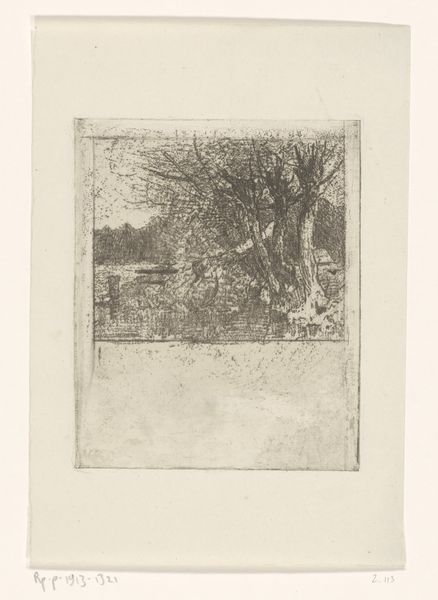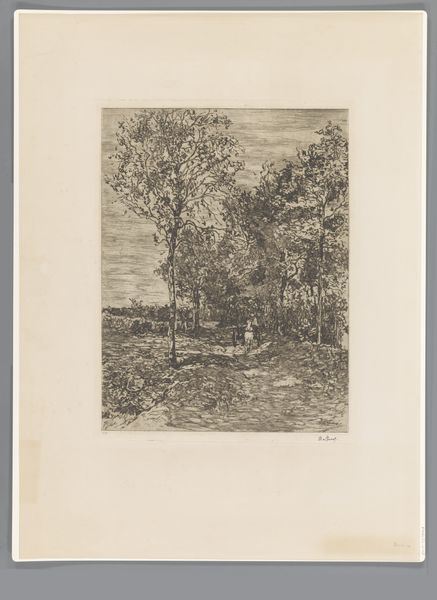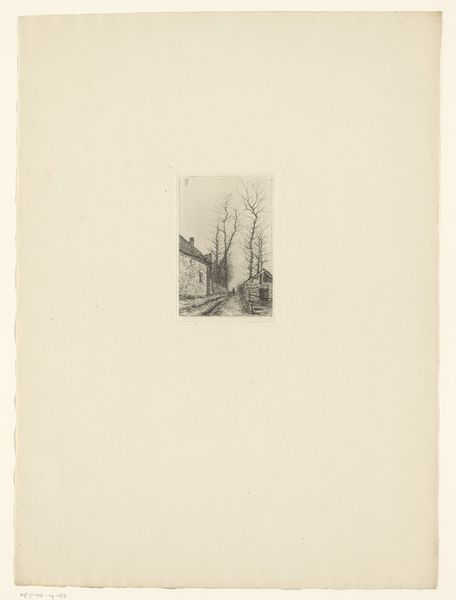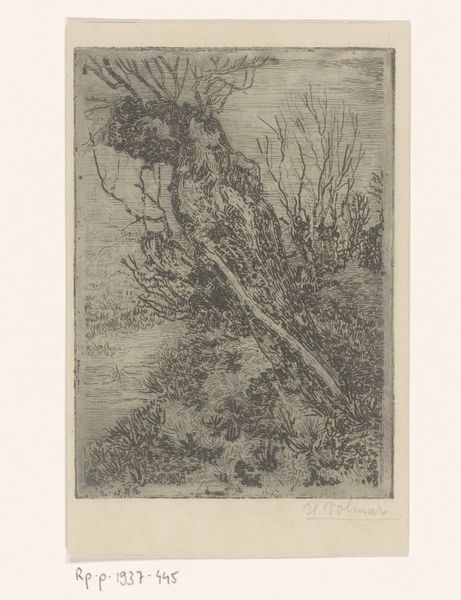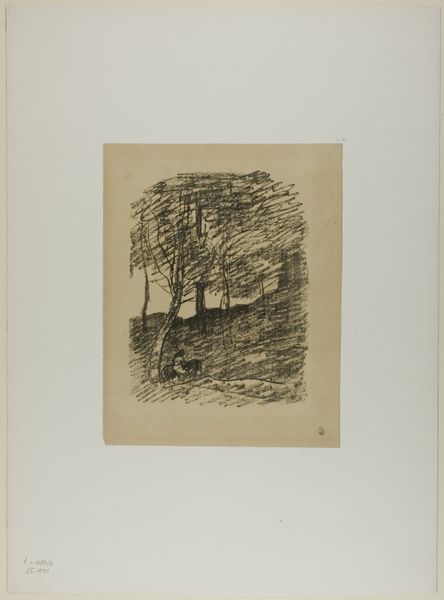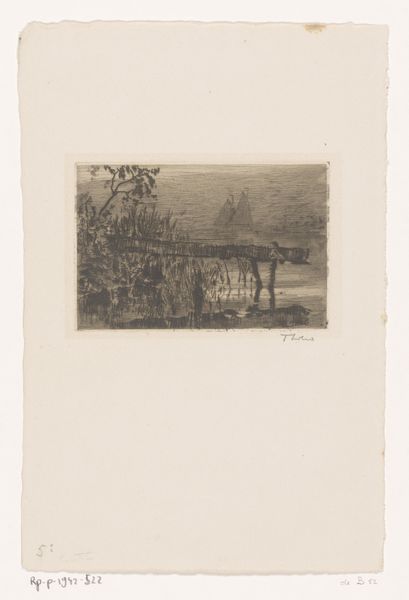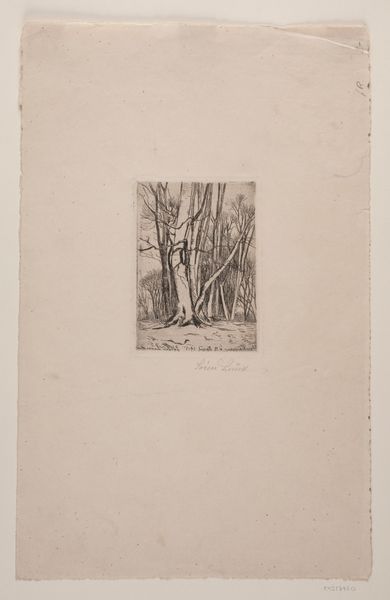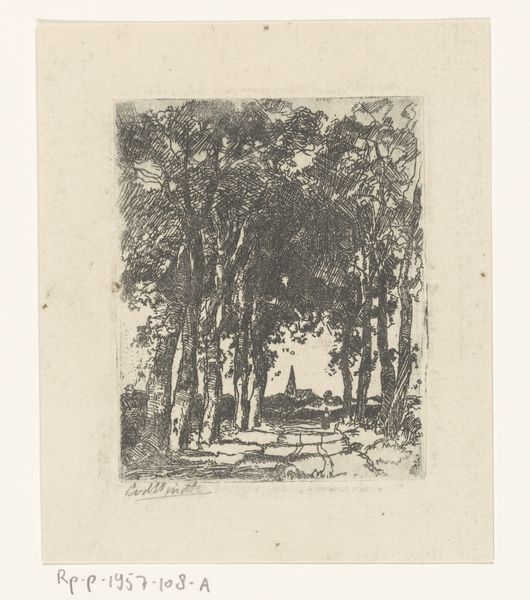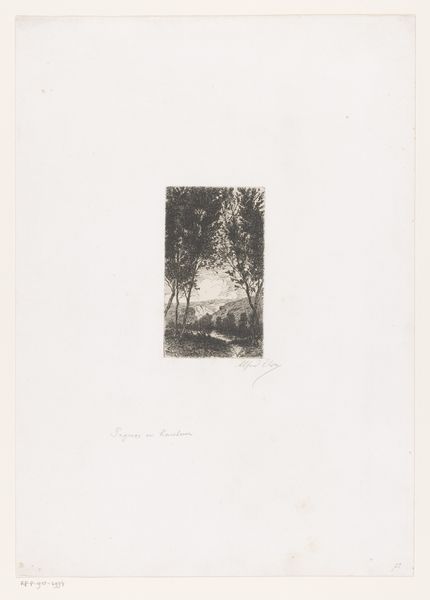
print, etching
# print
#
etching
#
old engraving style
#
landscape
#
realism
Dimensions: height 168 mm, width 115 mm
Copyright: Rijks Museum: Open Domain
Editor: This is "Wilg," an etching by Johannes Löhr, likely created sometime between 1892 and 1928. I'm really struck by the level of detail in the tree bark and the texture of the foliage. It feels so tactile! What is your read of the piece? Curator: Look closely at the marks that constitute the image. Notice how Löhr used the etching process to translate the physical world. We have acid etching away at a metal plate, the labor involved in repeatedly submerging, in applying the resist, in making choices. The landscape genre itself connects to land use and ownership, which carries its own socio-economic weight. Consider also how easily prints are reproduced and consumed. Editor: That's fascinating. So, you're saying the medium itself – etching – and the way it’s been used speaks to a broader system of production and access? The image itself depicts nature, but its creation implicates systems that actually shape our relationship to the environment? Curator: Precisely! And look at the recurring horizontals: the planks of the fence, the implied horizon line... These are artificial lines imposed on the "natural" world, visual cues about human intervention and control. How do you see this playing out further? Editor: The very choice of landscape could reflect societal views on nature and agriculture during that period, as a resource but also something to be cultivated. The artist isn't simply showing us a pretty view but revealing the complex relationships between people, work, and land through the printmaking process. It brings a new perspective to considering an artwork's themes. Curator: Absolutely. Reflecting on the relationship between the artwork, material, and historical context is so vital. Thanks for making the connections visible. Editor: Thank you. I now see there is so much more to art analysis beyond only looking at what it is; it is also imperative to understand how art comes into being.
Comments
No comments
Be the first to comment and join the conversation on the ultimate creative platform.

